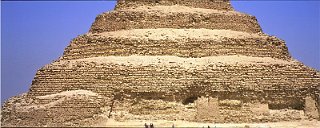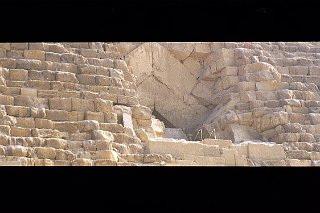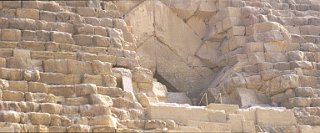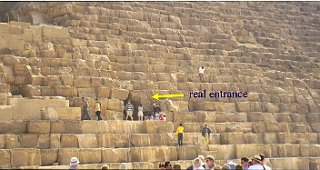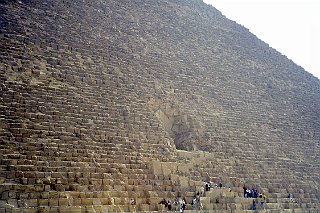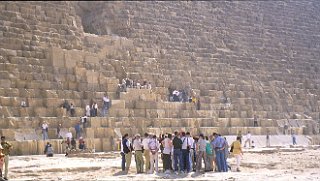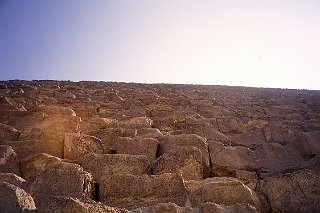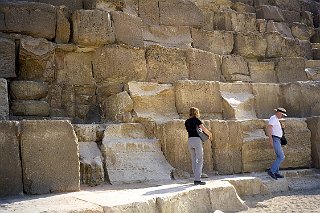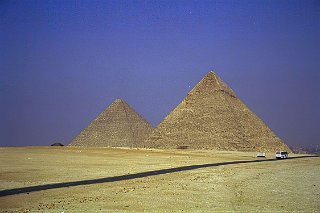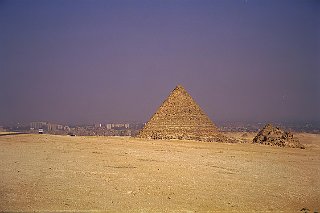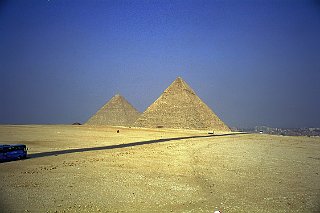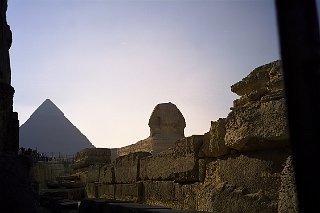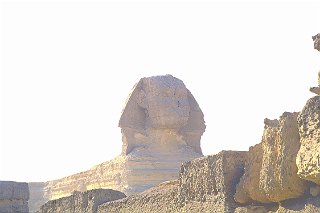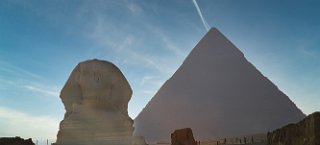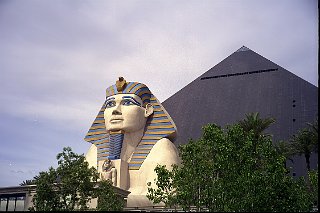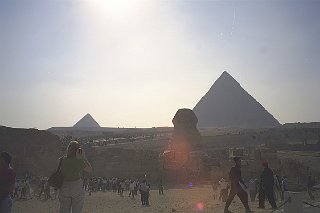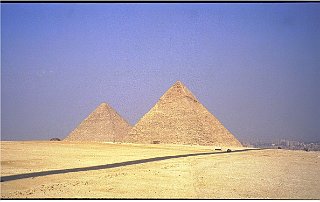
The pyramid of Chephre (Khafre) is in the foreground, which makes it seem larger than the pyramid of Cheops.
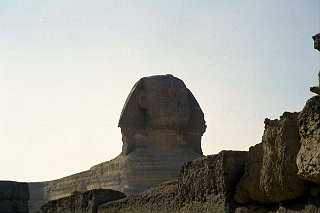
The Sphinx. Somehow, my camera was fooled into not adjusting correctly. (I think I was standing in a shadow.) If you peer closely, you may be able to see some of its features.
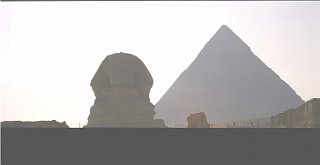
You can tell that it is Khafre's pyramid in the background and the Sphinx even in this badly exposed picture.
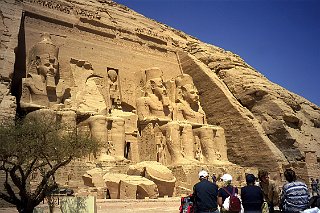
First look at the Temple of Ramesses II at Abu Simbel. The front is 108 feet high by 125 feet wide. Although is is difficult to imagine, this (and the Temple of Nefertari) were taken apart, raised 60 meters, moved to this point, and reconstructed. This was done to avoid having them covered by Lake Nasser.
